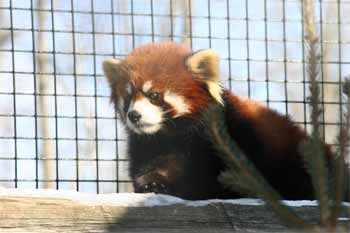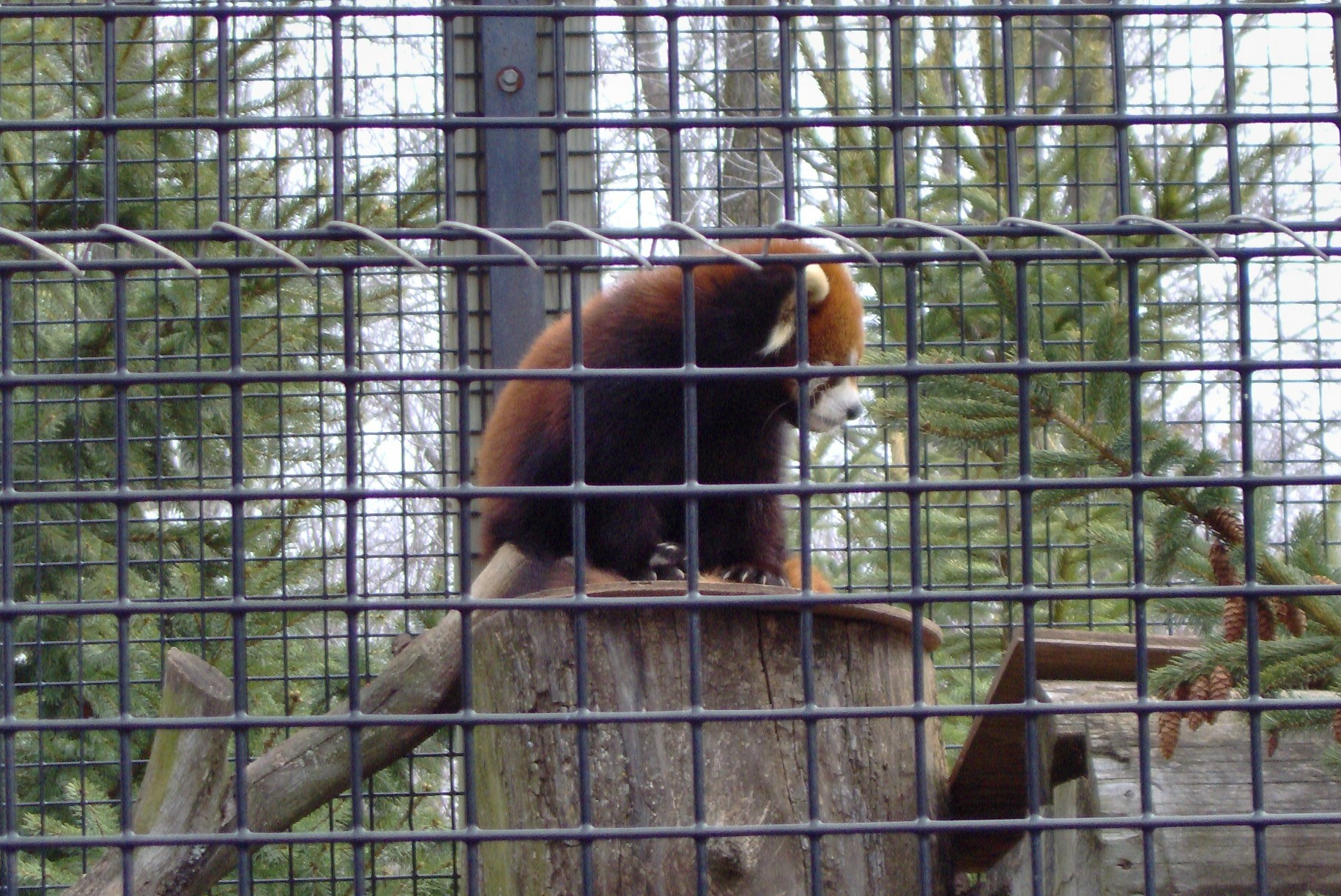|










| |
Red
pandas have many adaptations.
First, they have an enlarged wrist bone located on each front paw, which serves
as a "thumb." This sixth digit or "thumb" is useful for feeding because it
allows the pandas to grasp and hold bamboo tightly. Red pandas also have
large tails which are often used as a pillow and prevent heat loss.
Furthermore, their tails assist them in maintaining balance. For instance, when
standing on their hind legs, their tails act as a prop.
|
|

Above: From the
picture, one can see that red pandas are not very big.
|
In addition to these adaptations,
red pandas also have a small body mass. They usually weigh around 8 to 14
pounds. Their small body mass allows them to walk on thin branches, making the
panda inaccessible to heavier predators.
|
Red pandas are
also excellent climbers, and they have strong, curved claws. When descending down a tree
headfirst, the red panda uses hind-foot mobility. During hind-foot
mobility, the red panda rotates its ankle outward, allowing its hind claws to
firmly grasp the tree trunk. Headfirst descent has many advantages
for the red panda. First, it is much quicker than backing down the
tree, and it also prepares the panda to make a quick departure when it reaches
the ground.
|
| Below: Here's another picture that I took of "Tae-Bo" at
the New Zoo in Green Bay, Wisconsin. If you look closely,
you can see his sharp claws. His claws are an important
adaptation for survival. |
|
 |
|

